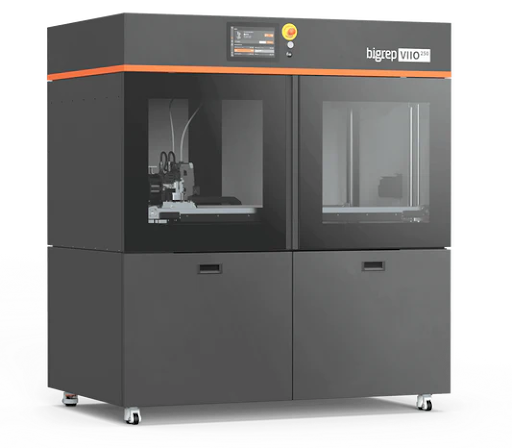In the ever-evolving world of technology, 3D printers have become a significant game-changer across various industries. From healthcare to manufacturing, and education to fashion, 3D printers are revolutionizing how we create and innovate. As we dive deeper into the 21st century, the advancements in 3D printing technology continue to grow at an exponential rate. This blog will explore the latest trends and innovations in 3D printers, providing insights into what the future holds for this transformative technology.
Innovations Driving the Future of 3D Printing
The future of 3D printing is bright, with numerous innovations poised to take the technology to new heights. Here are some key innovations driving the future of 3D printing:
1. AI and Machine Learning Integration
The integration of artificial intelligence (AI) and machine learning into 3D printing is enhancing the design and manufacturing process. AI algorithms can optimize designs for performance and efficiency, predict potential issues, and improve the overall quality of printed objects. Machine learning is also being used to develop smarter 3D printers that can adapt to different materials and printing conditions.
2. Hybrid Manufacturing
Hybrid manufacturing combines traditional manufacturing methods with 3D printing to create complex and high-quality products. This approach leverages the strengths of both techniques, allowing for greater flexibility and precision in the production process. Hybrid manufacturing is particularly useful in industries such as aerospace and medical devices, where complex geometries and high-performance materials are required.
3. Advanced Post-Processing Techniques
Post-processing is a critical step in the 3D printing process, and advancements in this area are improving the quality and functionality of printed objects. Techniques such as automated sanding, polishing, and surface finishing are enhancing the appearance and performance of 3D-printed products. Additionally, new post-processing methods are being developed to improve the mechanical properties and durability of printed objects.
4. Multi-Material and Multi-Color Printing
The ability to print with multiple materials and colours simultaneously is revolutionizing the 3D printing industry. Multi-material printing allows for the creation of objects with varying properties, such as flexibility, strength, and conductivity, within a single print. Multi-colour printing enhances the aesthetic appeal of printed objects, making it possible to create detailed and vibrant designs.
5. Blockchain and 3D Printing
Blockchain technology is being explored as a way to enhance the security and traceability of 3D printing. By leveraging blockchain, companies can create secure and transparent supply chains for 3D-printed products. This technology can also help protect intellectual property and ensure the authenticity of printed objects.
The Role of 3D Printing Services
3D printing services play a crucial role in making the technology accessible to a broader audience. These services provide businesses and individuals with access to advanced 3D printers and materials without the need for significant upfront investment. Here are some key benefits of using 3D printing services:
1. Cost-Effective Prototyping
3D printing services offer cost-effective solutions for rapid prototyping, allowing businesses to test and refine their designs quickly and efficiently. This reduces the time and cost associated with traditional prototyping methods, enabling faster product development and innovation.
2. Custom Manufacturing
3D printing services provide the flexibility to create custom and personalized products. Whether it’s custom medical devices, personalized gifts, or unique prototypes, 3D printing services can cater to a wide range of needs. This level of customization is particularly valuable in industries such as healthcare, where individualized solutions are essential.
3. Access to Advanced Technology
By leveraging 3D printing services, businesses and individuals can access the latest 3D printing technology and materials. This ensures that they can take advantage of the most advanced capabilities without the need for significant investment in equipment and infrastructure. 3D printing services also provide expertise and support, helping clients achieve the best possible results.
4. Scalability and Flexibility
3D printing services offer scalability and flexibility, making it easy to adjust production volumes based on demand. Whether it’s a small batch of prototypes or large-scale production runs, 3D printing services can accommodate various production needs. This flexibility is particularly beneficial for startups and small businesses that may have fluctuating production requirements.
5. Reduced Waste and Environmental Impact
3D printing is an additive manufacturing process, meaning that it creates objects layer by layer, using only the material necessary for the final product. This results in significantly less waste compared to traditional subtractive manufacturing methods. By utilizing 3D printing services, businesses can reduce their environmental impact and contribute to more sustainable manufacturing practices.
Conclusion
The world of 3D printing is constantly evolving, with new trends and innovations emerging regularly. From bioprinting and sustainable practices to large-scale printing and AI integration, the future of 3D printing holds immense potential. As technology continues to advance, 3D printers will become even more versatile and accessible, transforming industries and driving innovation.




